In 1890, a year after her wedding, a Bavarian princess received two encrypted postcards. Can a reader decipher them?
Today, I’m going to introduce another series of encrypted postcards from the collection of my friend Tobias Schrödel. For those who don’t know him yet: Tobias is a successful comedy hacker and crypto expert.

Source: Schrödel (used with permission)
In addition, Tobias is the author of the world’s best crypto bibliography. His catalog contains about 550 records.
Two encrypted postcards
The encrypted postcards I am going to introduce stem from a large set of scans Tobias provided me. Both cards were sent to a German “Fürstin” (princess). Here are the address sides:
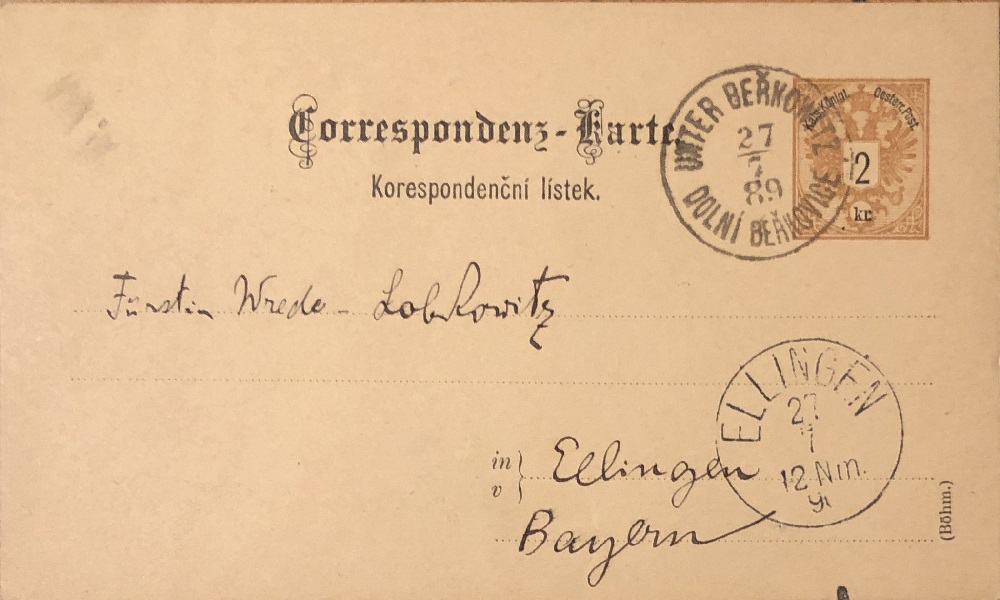
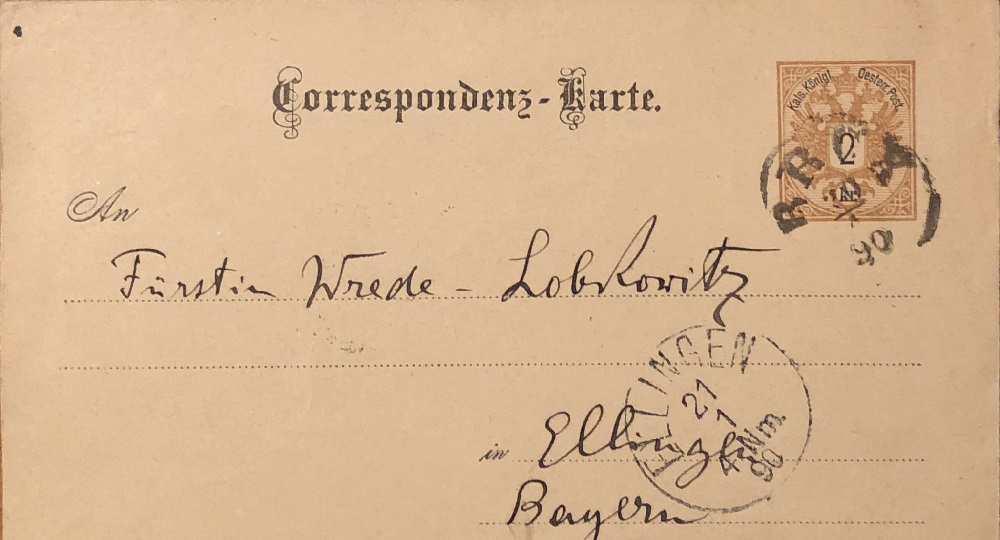
These cards were sent in 1890 (though I’m confused by the upper stamp on the first card, which shows the year 1889), which means that they belong to the oldest encrypted postcards I know. They were sent from the town of Dolní Beřkovice in northern Czechia. The sender is not mentioned.
The recipient was a princess Wrede-Lobkowitz living in Ellingen in the German state of Bavaria. The first name of this lady is not mentioned. However, via a German Wikipedia article, I found out that in 1889, a German aristocrat named Carl Philipp von Wrede (1862-1928) married a certain Maria Anna von Lobkowicz (1867-1957). It seems likely that Maria Anna was the person the cards were sent to. Perhaps, her husband Carl Philipp was the sender.
The cryptograms
Let’s now look at the message on the first card:
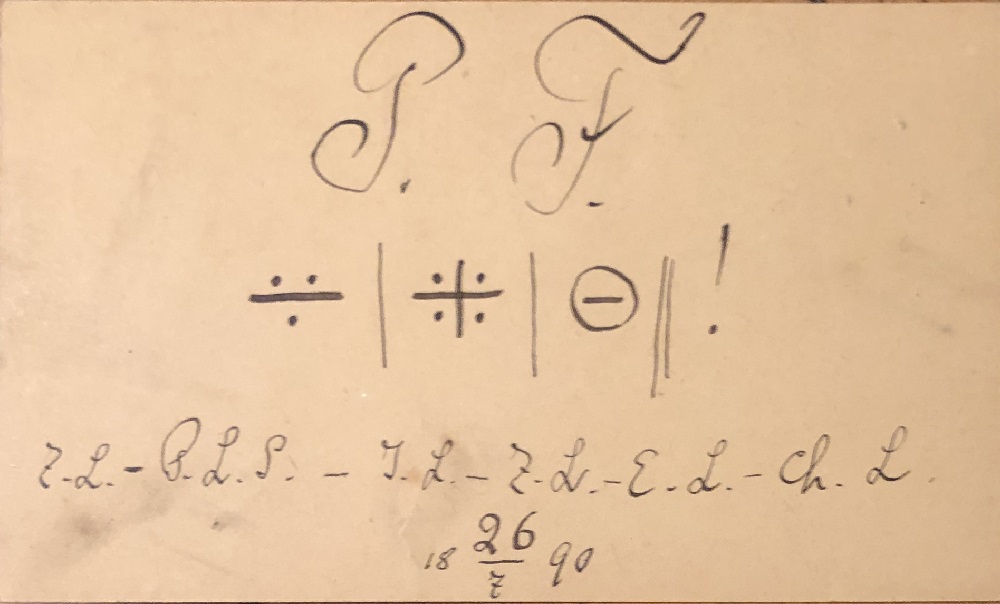
The letters are probably the initials of person names. The numbers apparently represent a date: 26/7/1890. This confirms that the first card was written in 1890, not in 1889, as the upper stamp on the address side says.
It might be possible to decipher the symbols if one looks at the second card, which contains more writing of this kind:
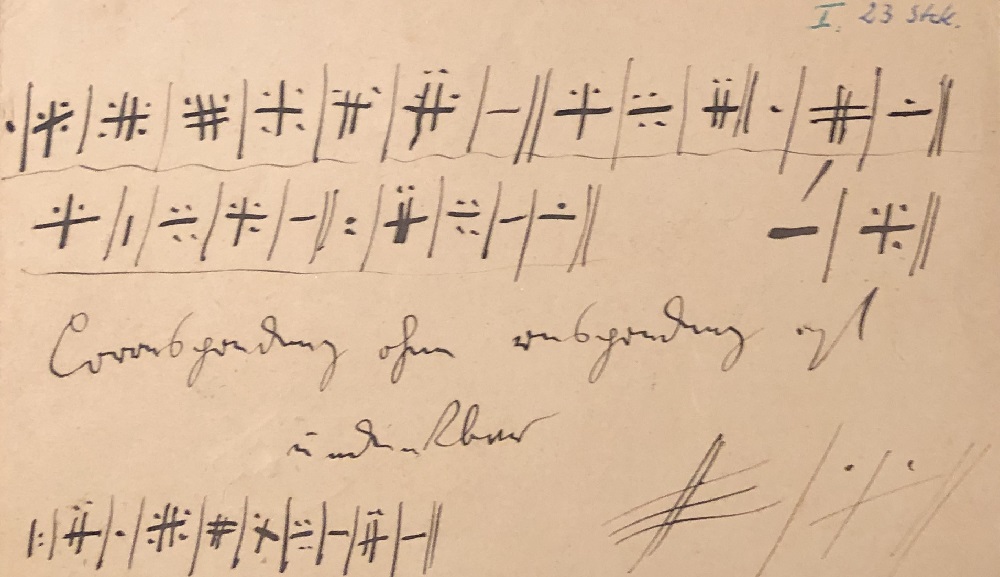
Perhaps, these symbols represent a MASC-encrypted text. I assume that a single vertical line separates letters, while a double line separates words. Combined, the two cryptograms consist of almost 40 letters, which might be enough to solve them.
There is also sentence written in the clear (probably in German), but to my regret, I can’t read it.
Can a reader help to solve the mysteries behind these postcards?
Follow @KlausSchmeh
Further reading: Who can solve this encrypted postcard from WW2?
Linkedin: https://www.linkedin.com/groups/13501820
Facebook: https://www.facebook.com/groups/763282653806483/

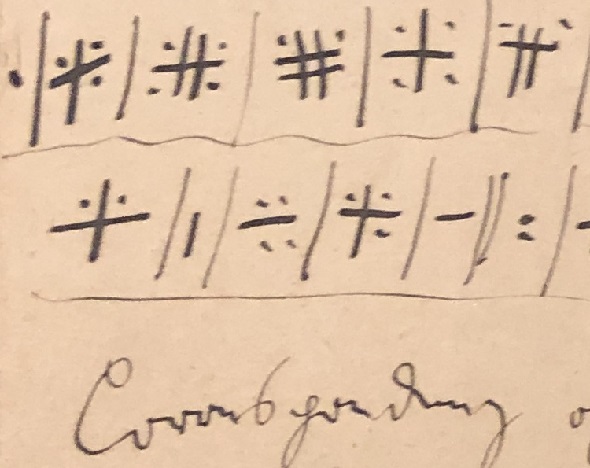

Kommentare (10)